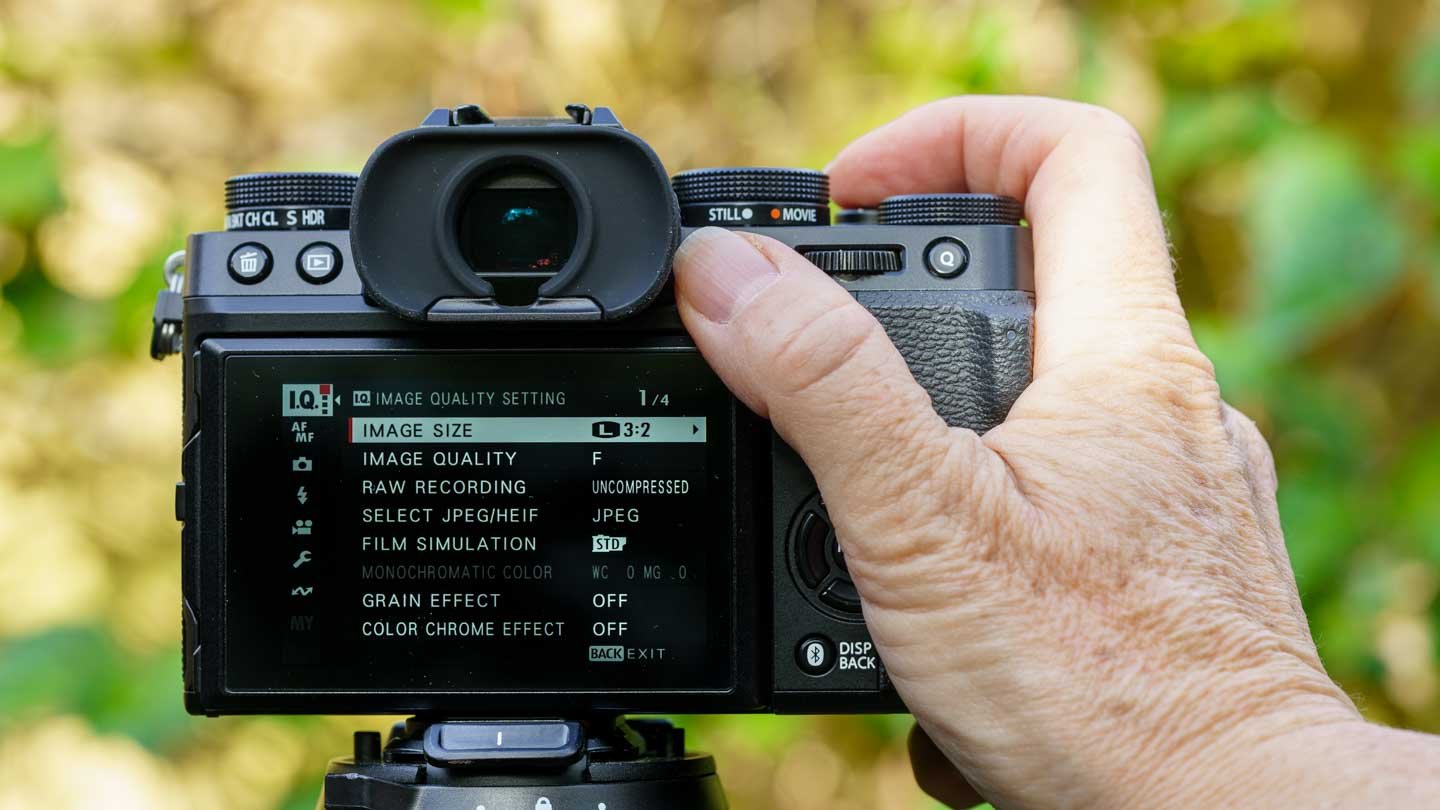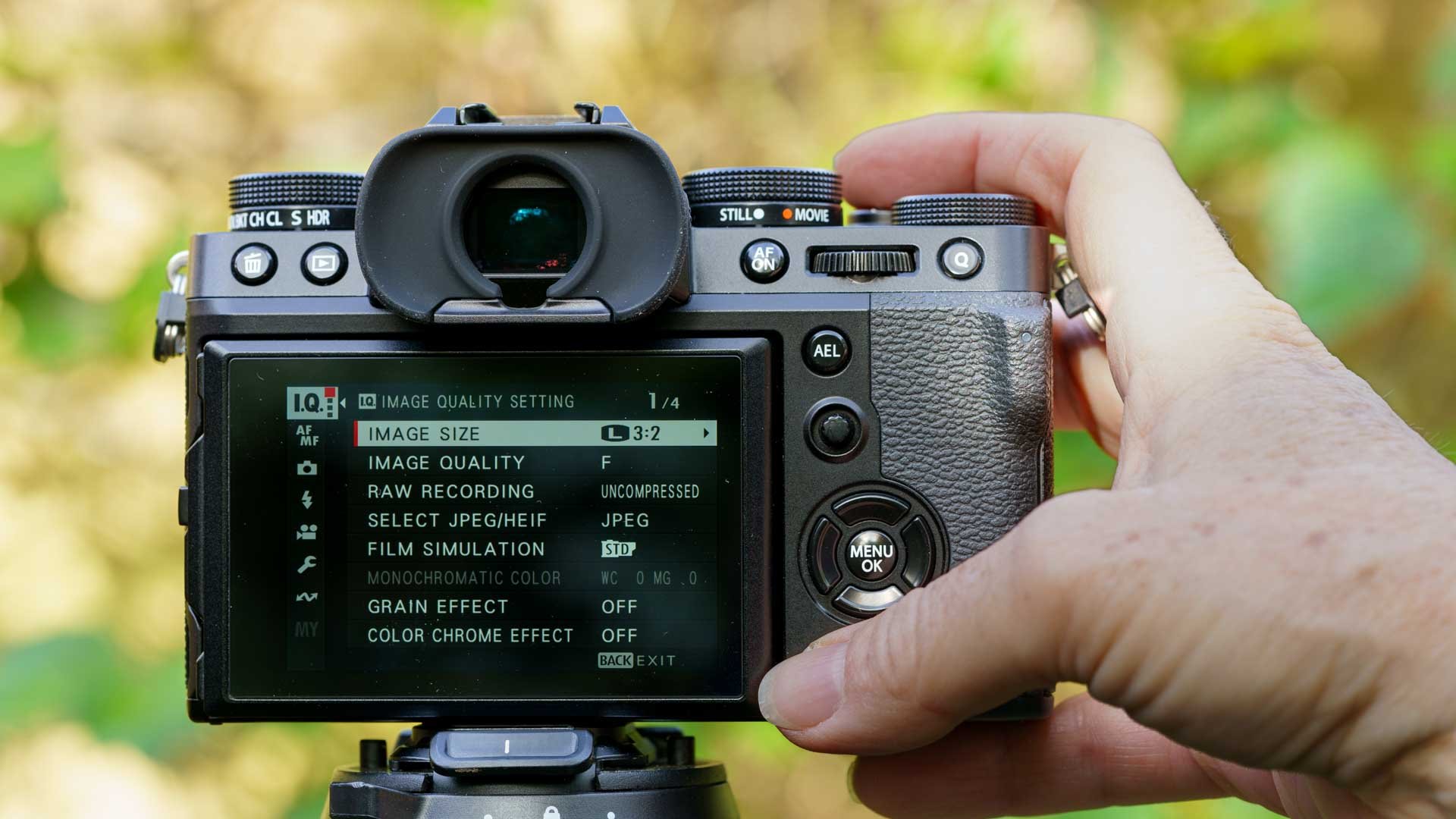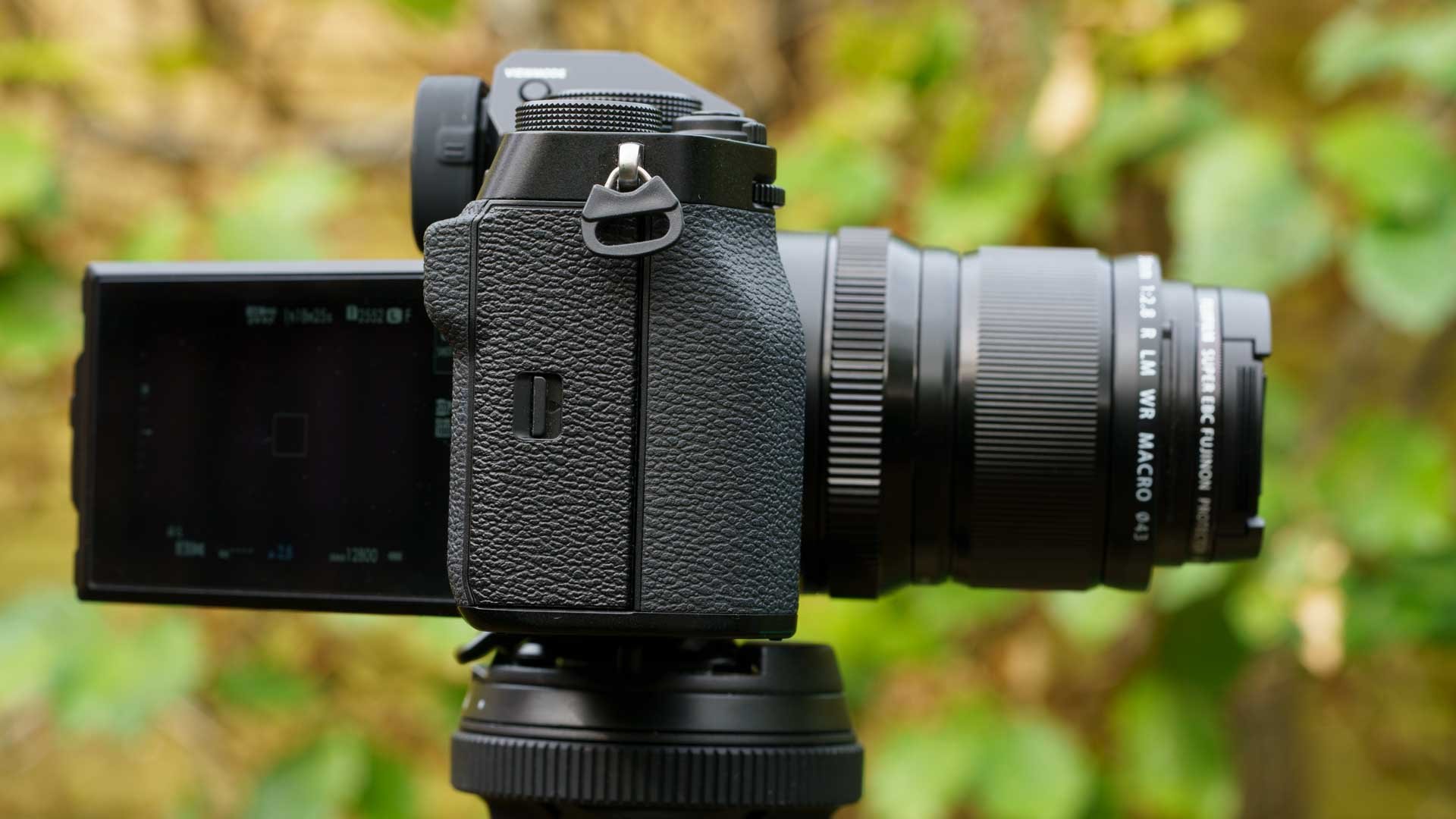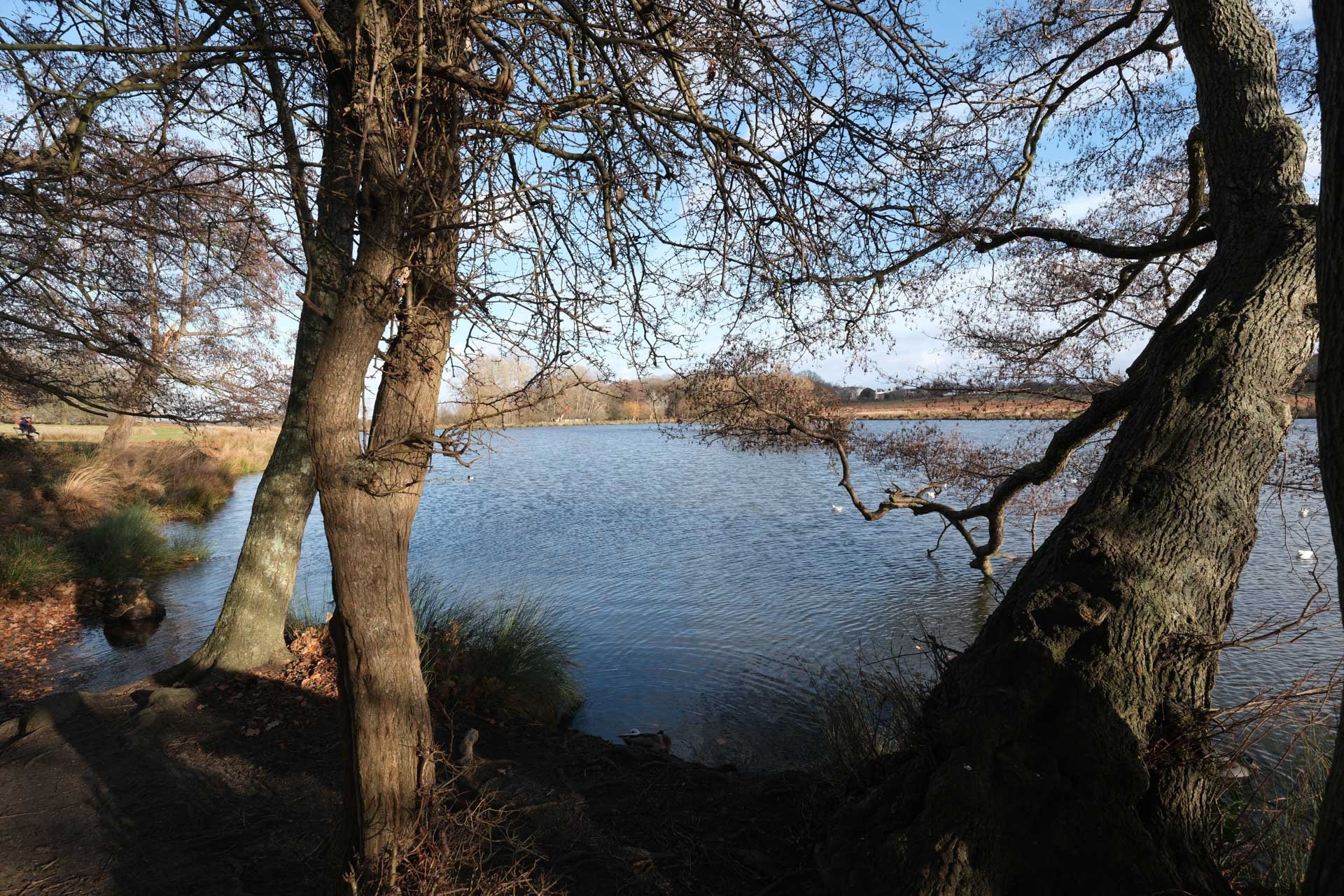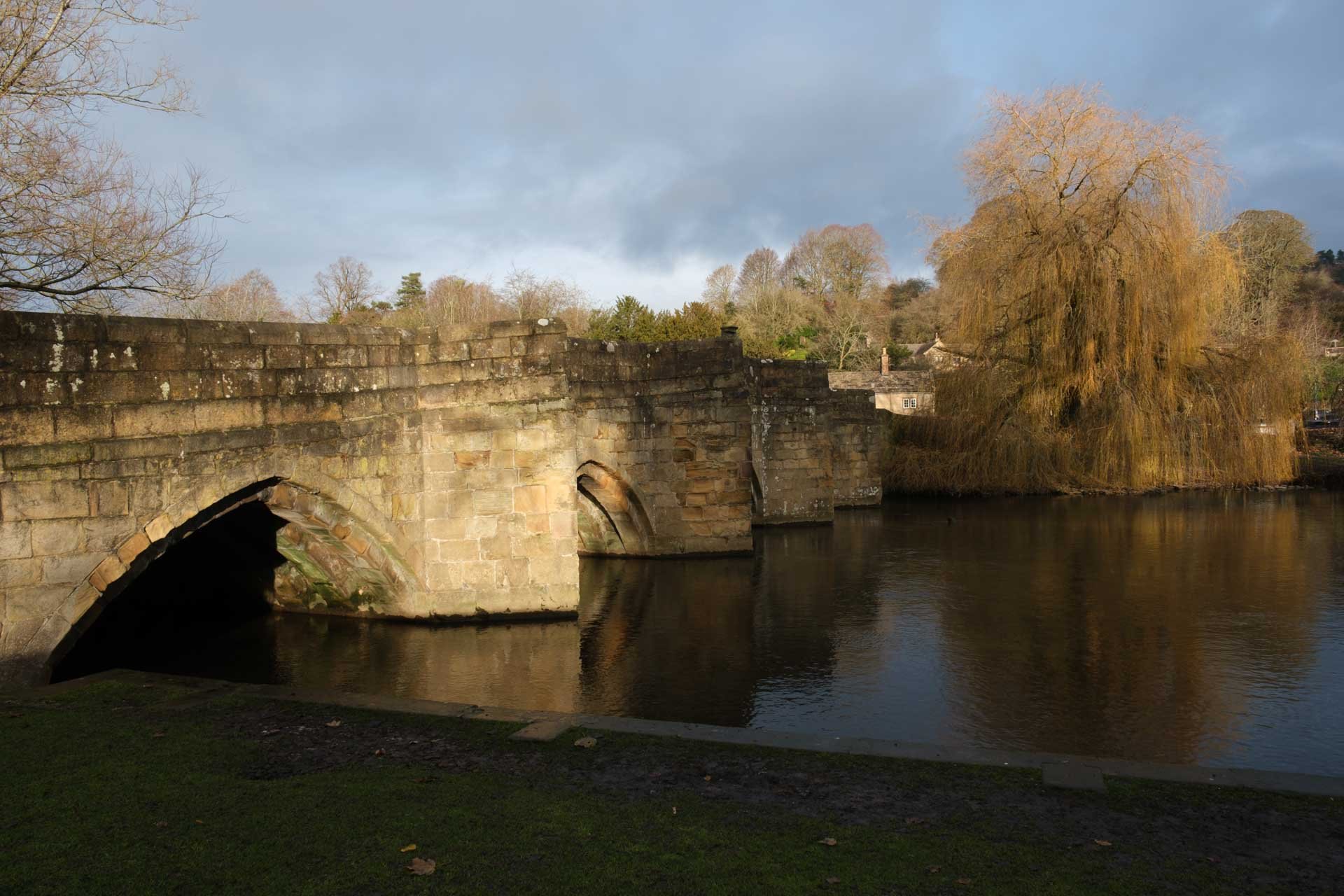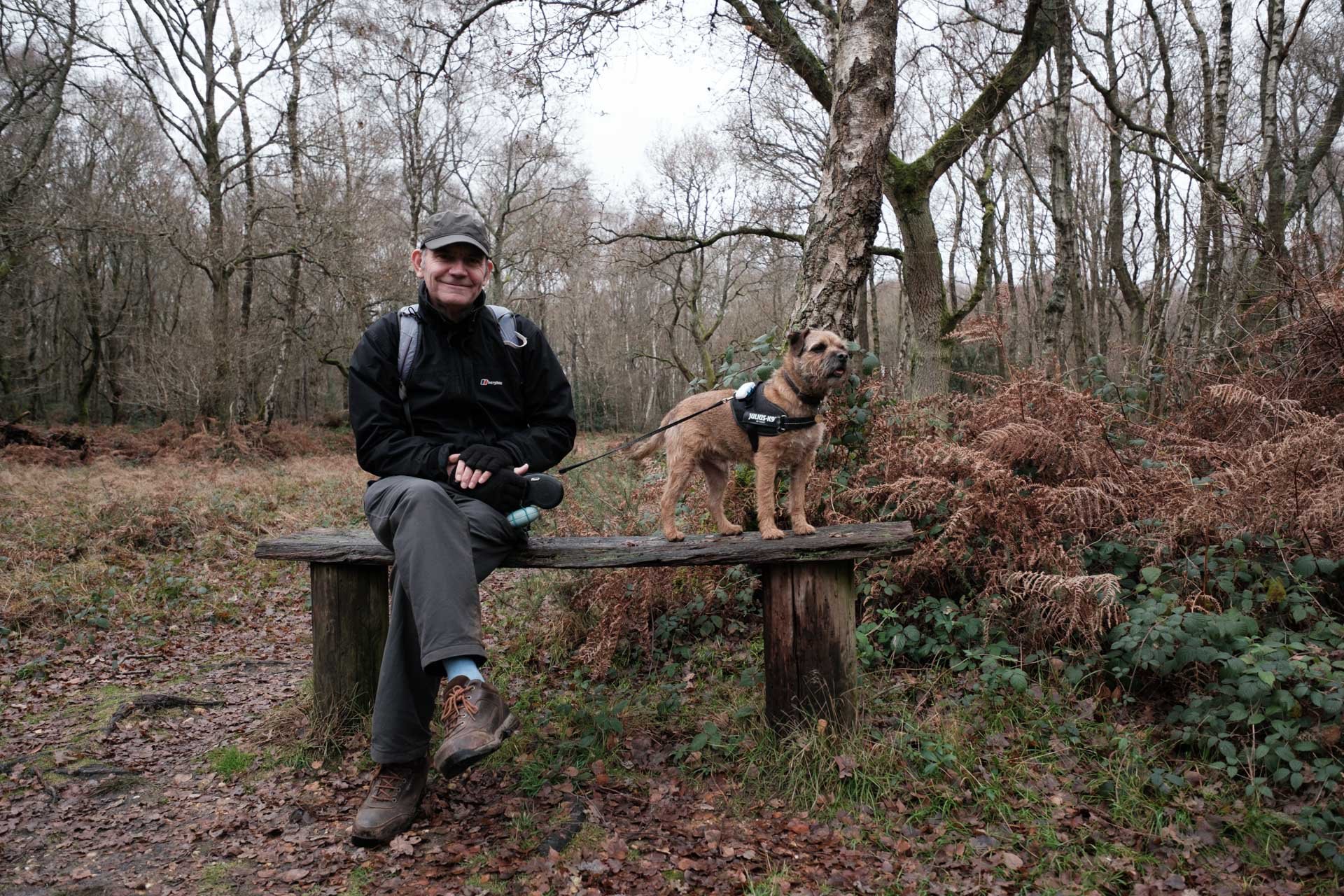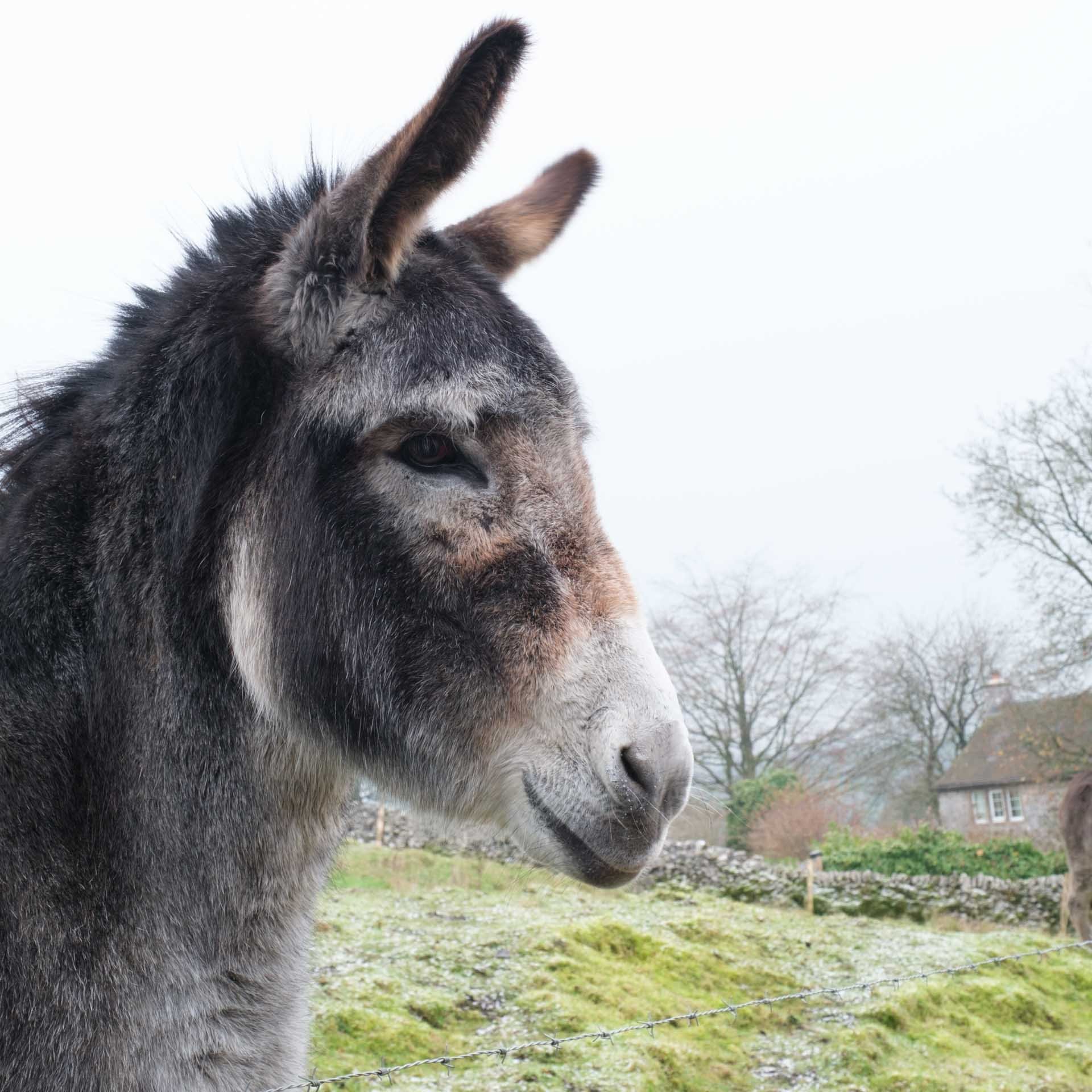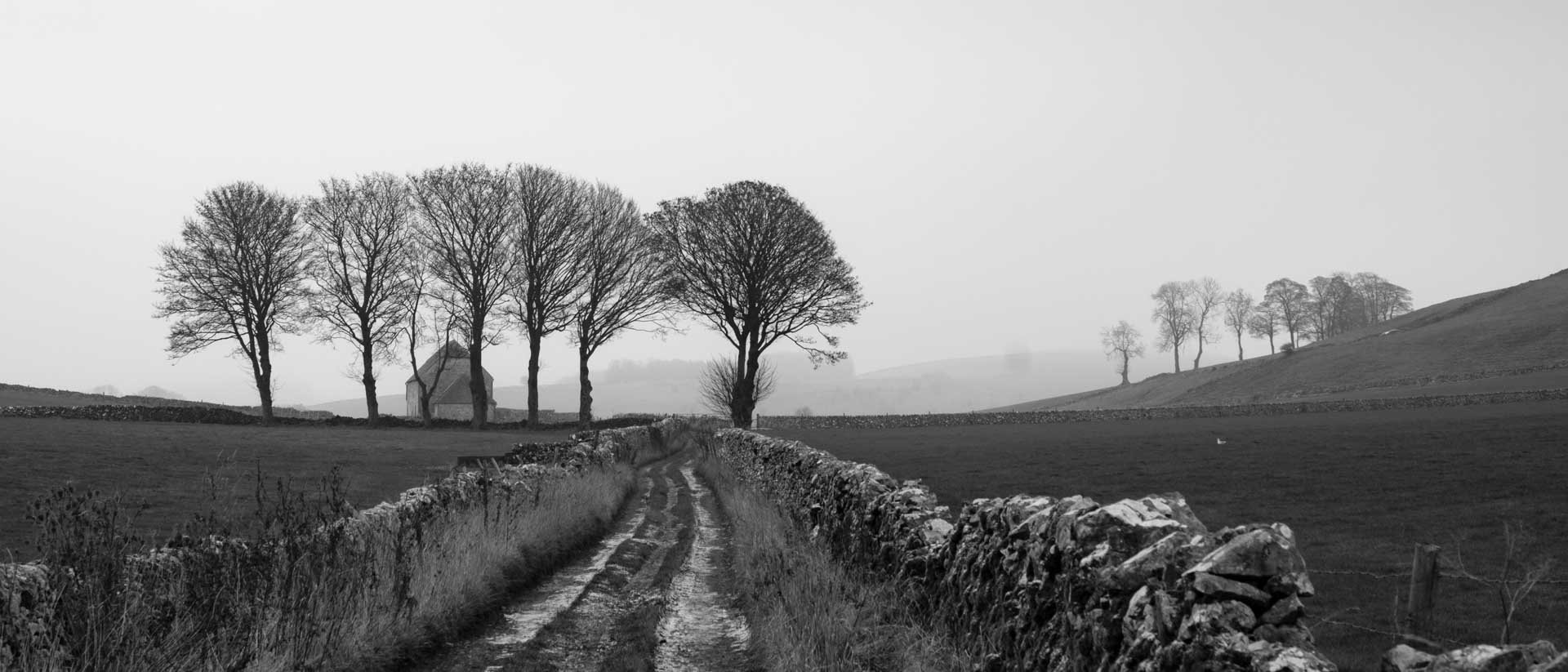Fujifilm X-T5 Review
Summary Verdict
In the competitive world of mirrorless cameras, the Fujifilm X-T5 excels with its advanced 40MP sensor and intuitive design, making it a hit among photographers of all levels. Its subject detection modes, enhance its appeal, especially for wildlife photography - supported by Fujifilm's high-quality lenses. Catering to those who prefer the APS-C format for its balance of size, quality and features, the X-T5 has become a favourite within the SheClicks community. It appeals to both seasoned Fujifilm users and DSLR switchers, rewarding those who appreciate its traditional controls with creative possibilities. It showcases Fujifilm's understanding of photographers.
Score: 5/5
For
Major step-up in resolution from the X-T4
New subject detection system
3-way tilting screen
Against
Crop applied to many of the video outputs
Complex array of continuous shooting options
What is the Fujifilm X-T5?
The Fujifilm X-T5 is an APS-C format mirrorless camera and the fifth model in Fujifilm's popular X-Tx series of cameras. This line is aimed at enthusiast photographers, but that’s not to say that they aren’t also sometimes found in the hands of professional photographers.
The X-Tx series has always been about balancing fairly high-end features with traditional design and the X-T5 continues this vein. It sits above the smaller Fujifilm X-T30 II, which has a similar traditional design and is a popular choice for travel. It’s also above the Fujifilm X-S20 which has some interesting features for vloggers and a control layout that is more familiar to DSLR users as it has an exposure mode dial.
Above the X-T5, there’s the 40Mp X-H2 and 26.1MP X-H2S. These are targeted more towards professional content creators. The X-T5 has some high-end video features, but its main focus is stills photography.
Read our Fujifilm GFX100RF Review
Fujifilm X-T5 Price
$1,699 / £1,699 body-only
$2,099 / £2,049 with XF18-55mm f/2.8-4
$2,199 / £2,149 with XF 16-80mm f/4
Fujifilm X-T5 Key Specifications
Camera Type: Mirrorless
Announced: 2nd November 2022
Lens Mount: Fujifilm X
Sensor: 40.2MP X-Trans CMOS 5 HR BSI APS-C format (23.5 x 15.6mm)
Processing Engine: X-Processor 5
Autofocus system: Intelligent Hybrid AF (contrast AF / phase-detection AF) with up to 425 selectable AF points
Subject Detection AF: Human Eye/Face or Animal, Bird, Automobile, Motorcycle & Bike, Airplane, Train
Sensitivity: ISO 125 to 12,800 (expandable to ISO 64 to 51,200)
In-Body Image Stabilisation (IBIS): 5-axis giving up to 7 stops shutter speed compensation
Max Shutter Speed: 1/180,000 with electronic shutter
Continuous Shooting: 15fps with mechanical shutter, 20fps with electronic shutter (later with 1.29x crop)
Video: 6.2K (6240 x 3510) at up to 30p with 1.23x crop, DCI4K (4096 x 2160) at up to 60p with 1.14x crop, HD at 240p with 1.23x crop, 6.2K Apple ProRes externally in 10-bit at 4:2:2
Viewfinder: 0.5-inch type 3.69-million-dot EVF with 0.8x magnification
Rear Screen: 1.84 million-dot 3-way tilt LCD touchscreen
Storage: 2x SD/SDHC/SDXV UHS-II
Battery: NP-W235 Li-ion
Dimensions (WxHxD): 129.5 x 91 x 63.8mm
Weight: 557g with battery and memory card, 476g body only
The Fujifilm X-T5’s screen can be tilted up or down in landscape orientation and up in portrait orientation
Features
The heart of the X-T5 is Fujifilm’s 40.2 MP backside-illuminated X-Trans CMOS 5 HR sensor which was first seen in the more professional-orientated X-H2 when it was introduced in September 2022. This same sensor was also recently included in the Fujifilm X100 VI - an APS-C format compact camera.
As in the X-H2, the X-T5’s 40MP chip is coupled with the latest X-Processor 5 and it’s a combination that enables a host of improvements over the Fujifilm X-T4.
One of the most significant advancements in the X-T5 in comparison with the X-T4 is its AI-trained Subject Detection. This feature can recognise a variety of subjects with settings for Animal, Bird, Automobile, Motorcycle & Bike, Airplane and Train, transforming the way photographers capture fast-moving or unpredictable subjects. This technological leap is not just about convenience; it's about empowering photographers to capture moments that are normally challenging.
Firmware version 2.0 added insects to the range of subjects detected in ‘Bird’ mode, and drones to ‘Airplane’ mode.
The camera's autofocus system is Fujifilm’s Intelligent Hybrid AF which combines phase-detection and contrast detection technology. Crucially, the phase-detection element offers 100% coverage across the sensor and there are 3.33-million phase detection pixels. The low light focusing capability is particularly impressive, claiming effectiveness down to -7EV.
No modern camera is complete without 5-axis in-body image stabilisation (IBIS) and the X-T5’s system can compensate the shutter speed by up to 7EV with compatible stabilised lenses. That’s a major bonus in low light levels or when attempting handheld long-exposure photography.
Fujifilm has also included its Pixel Shift Multi-Shot technology which uses the IBIS system to capture a series of images that can be composited using Fujifilm’s Pixel Shift Combiner software. This creates images with four times the normal resolution, resulting in 160MP composite images.
In comparison with the X-T4, the X-T5 has a wider native sensitivity (ISO) range. It starts lower (at ISO 125, down from 160) and matches the high end of the X-T4 (ISO 12,800). The X-T5’s expansion settings, however, top out at ISO 25,600, one stop lower than the X-T4’s.
Despite the increase in pixel count over that of the X-T4 (26MP), the 40MP X-T5 has the same continuous shooting rate of 20MP when the electric shutter is used. Using this rate results in a 1.29x crop, but with the right memory card it’s possible to shoot up to 168 Jpegs, 72 compressed raw files, 41 lossless compressed raw files, 23 uncompressed raw files, 37 compressed raw and Jpeg files, 31 lossless compressed raw files and Jpegs or 23 uncompressed raw and Jpeg files.
Switching to the mechanical shutter reduces the maximum shooting rate to 15fps, but there’s no cropping and its possible to shoot up to 119 Jpegs, 39 compressed raw files, 22 lossless compressed raw files, 17 uncompressed raw files, 27 compressed raw and Jpeg files, 21 lossless compressed raw files and Jpegs or 19 uncompressed raw and Jpeg files. That could be very useful for sports and wildlife photography.
Fujifilm's Film Simulation modes have been widely praised and offer colour profiles that emulate the company’s film stocks. The X-T5 has 19 modes as follows: PROVIA/Standard, Velvia/Vivid, ASTIA/Soft, Classic Chrome, PRO Neg.Hi, PRO Neg.Std, Classic Neg., Nostalgic Neg., ETERNA/Cinema, ETERNA BLEACH BYPASS, ACROS, ACROS + Yellow Filter, ACROS + Red Filter, ACROS + Green Filter, Black & White, Black & White + Yellow Filter, Black & White + Red Filter, Black & White + Green Filter, Sepia.
Fujifilm X-T5 Video Features
While the X-T5 is primarily a stills camera, its video capabilities are far from an afterthought. It can record 6.2K video and supports advanced colour profiles like F-Log2. This makes it a viable option for videographers who need high-resolution footage with wide dynamic range.
It’s also able to record raw video to external devices, however, it's important to note that at frame rates over 30p, the X-T5’s 6.2K video, 4K HQ video and 4K video is cropped. The most dramatic is a 1.23x crop while for some it’s just a 1.14x crop.
The Fujifilm X-T5 has a fairly shallow grip which means it is best carried on a strap.
Build and Handling
Despite its fairly compact size, the X-T5 does not compromise on build quality. The weather-sealed magnesium alloy body feels durable and reliable. It’s a camera that gives you confidence in its abilities when you pick it up.
Compared to many cameras, the Fujifilm X-T5 has a fairly shallow grip, but it’s covered in a grippy texture that gives it decent purchase. However, I’d always carry it on a strap just to be sure that it’s safe.
I’m around 5ft 2inches (157.5cm) in thick socks, but I have fairly big hands for my height. That probably puts my hands at around mid-sized for a woman. I find the X-T5 comfortable to hold and use. When I’m holding the camera ready to use, I can keep my index finger on the shutter release while my thumb is on any of the buttons on the right side of the back of camera.
This short video shows the Fujifilm X-T5 from all sides.
I find the mini joystick, which is useful for shifting the autofocus point around the frame or making menu selections, is conveniently positioned to the left of the natural resting place for my thumb.
Although small, that ridge on the top-right of teh back of teh Fujifilm X-T5 gives nice purchase for your thumb.
Although the X-T5 isn’t radically different from its predecessors, its design has been influenced by user feedback. The return of the 3-way tilting screen is a direct response to the preferences of many Fujifilm users. It enhances the camera's usability and encourages shooting from creative angles in landscape or portrait orientation. It’s worth noting, however, that unlike the screens on the X-T4, X-TS20, X-H2 and X-H2S, the X-T5’s 3-inch 1.84-dot-million-dot screen can’t be flipped to face forwards to help with selfie-shooting or vlogging.
From left to right you can see the dials to set the sensitivity (ISO), shutter speed and exposure compensation.
The rear screen is joined by a 0.5-inch type 3.69-million-dot electronic viewfinder (EVF) with 0.8x magnification, which sits in the centre of the camera’s top-plate. It’s the same viewfinder as is on the X-T4 although with great magnification (0.8x rather than 0.75x). It has a lower resolution than the 5.76-million-dot EVF in the X-H2, but it puts in a good performance, delivering a natural view with an excellent level of visible detail.
Both the viewfinder and touchscreen give an accurate preview of the captured image. That means you can rely on the evidence before your eyes when setting the exposure, white balance and Film Simulation Mode.
The controls on the right side of the back of the Fujifilm X-T5 are all within easy reach. In this image, my thumb is on the AF-On button.
Fujifilm X-T5 Control Layout
It’s the control layout of the Fujifilm X-T series that really sets the cameras apart from others from Canon, OM System, Nikon, Panasonic and Sony. That’s because its based around the traditional design of some older film cameras and has dedicated dials for controlling ISO, shutter speed and exposure compensation. These are located on the top plate making them easy to see and adjust. It’s even possible to select the settings without powering up the camera.
Meanwhile, the aperture setting can be adjusted using a control dial or the aperture ring that is a feature of most Fujifilm X-Mount lenses.
This control layout will feel familiar to users of previous X-T series models, making the transition to the X-T5 seamless. It can look a little daunting to novice photographers and those who are new to Fujifilm, but I know several beginners who like being able to see the values they are setting on the dials and lens aperture ring and it’s helped them get to grips with photography.
Even with my finger on the shutter release of teh Fujifilm X-T5, I can reach the Display / Back button with my thumb.
For those unfamiliar with setting exposure using traditional controls, it is still possible to shoot in program, aperture priority, shutter priority and manual exposure mode. Setting a specific value on the shutter speed dial, ISO dial and aperture ring means you are working in manual exposure mode. If the lens aperture ring is set to ‘A’ for automatic, however, and you set a specific shutter speed using the shutter speed dial, you are working in shutter priority mode. In other words, you set the shutter speed while the camera controls the aperture. Conversely, setting an aperture value with the ring and putting the shutter speed dial to ‘A’, puts the camera in aperture priority mode. Putting the shutter speed dial and the aperture ring both to ‘A’ sets the camera to program mode and it controls both parameters.
There are two memory card ports that accept SD-stye media.
Performance
The Fujifilm X-T5's image quality is a testament to its advanced sensor and processor. Its 40MP sensor allows for an impressive level of detail, making the X-T5 suitable for traditional high-resolution applications such as landscape and cityscape photography.
The camera performs well across its standard ISO range (ISO 125-12,800), maintaining detail and effectively controlling noise. Generally, I would keep the sensitivity to ISO 6,400 or lower if possible, but it's possible to get good results from raw files at ISO 12,800. That means the camera is also good for use in low light.
The colour reproduction, a hallmark of Fujifilm cameras and its film-manufacturing knowhow, is exceptional. With the appropriate Film Simulation mode selected, Jpeg images often require little to no post-processing, while raw files offer greater flexibility for editing. As the screen and viewfinder show the impact of the various Film Simulation mode settings, the decision about the look of the Jpegs can be decided prior to capturing the image.
In addition, the X-T5’s auto white balance system is remarkably accurate in many situations and it does a good job of maintaining the natural colour of a wide range of scenes.
Further good news is that autofocus system is both fast and reliable, capable of tracking even fast-moving subjects. The X-T5’s Face and Eye Detection system does a remarkably job of spotting human eyes and focusing on them. It’s very useful for portrait, social and street photography.
I also find the Animal and Bird Subject Detection modes effective. Birds are challenging subjects but the X-T5’s Bird Subject Detection mode makes it much easier to get decent images with good focus. Even when a bird isn’t facing the camera, the camera usually spots it and surrounds it with a box to let you know. Impressively, the system requires only a small portion of an eye to be visible to highlight it and focus on it.
The Bird Subject Detection system is especially powerful when birds are perched among branches. Normally, you would expect to have to use a small autofocus point to avoid the camera focusing on the branches, but moving this into the right position causes delay that can mean you miss the shot. The X-T5’s Bird Subject Detection simplifies and speeds the process by focusing on the bird's eye even when there are branches in the foreground.
When I tested the X-T5 with the Fujifilm Fujinon XF 50-140 mm f/2.8 R LM OIS WR at 140mm (equivalent to 210mm in full-frame terms), approximately 60% of my handheld images were sharp when I shot with a shutter speed of 1/4sec. That equates to a compensation factor or about 6EV for me. It may not be the same for everyone, or if I had a couple shots of coffee.
Fujifilm X-T5 Sample Images
Follow the link to browse and download full-resolution images from the Fujifilm X-T5. Please respect our copyright.
Verdict
In the competitive market of mirrorless cameras, the Fujifilm X-T5 stands out, blending up-to-the-minute technology with a user-focused design. Its 40MP sensor and powerful processor deliver superb image quality, while its intuitive handling and robust build make it a joy to use for photographers of all levels.
The camera's Face and Eye Detection, and the various Detection modes, are effective and useful in a range of situations. The Animal and Bird Detection modes, for example, make the camera more attractive for wildlife photography than its predecessors, especially now that Fujifilm has the XF 100-400mm F4.5-5.6 R LM OIS WR and XF 150-600mm F5.6-8 R LM OIS WR lenses.
With the X-T5 (and other cameras in its line-up) Fujifilm is recognising that the APS-C format is an appealing one for serious photographers. Not everyone wants a full-frame camera, but many want a robust, well-crafted one that offers an extensive collection of creative features. The XT-5 demonstrates Fujifilm’s understanding of what photographers truly value.
It’s no surprise that the Fujifilm X-T5 was greeted very warmly by many in the SheClicks community. It’s proved a very popular camera with people upgrading from the Fujifilm X-T4 and older models. It also makes an excellent first mirrorless camera for anyone switching from a DSLR provided you are prepared to invest a little time getting to grips with the traditional controls. In my view, it’s well-worth doing so.
SheReviews
Name: Tina Hogg
Previous Camera: Fujifilm X-T3
Favourite type of photography: Street, macro and documentary
Instagram: @photo-nan-
What attracted you to the Fujifilm X-T5?
I am familiar with the Fujifilm system which I find small and very usable. It has a beautiful retro analogue-style camera design with improved ergonomics, upgraded (greater magnification) electronic viewfinder (EVF) and a discreet 3-way tilt LCD screen which X-T4 doesn’t have (it has a vari-angle screen instead).
I love the dials and not having to go into the menu settings to make adjustments, plus the camera feels great in my hand and looks amazing.
The human eye detection function is far better than that of my previous camera, and it’s good to have animal eye recognition.
The battery life is also much improved on the XT5 and, unlike with my last camera, I often go all day on the same battery.
Has your new camera helped you get better results or made some photography easier?
I have been told that since changing from the X-T3 to the X-T5 my photography has improved. The improved results have also inspired me to use it more.
Has your camera lived up to your expectations?
This camera is amazing, it has lived up to and beyond my expectations.
Is there anything you would like to change about your camera or that you will look for when upgrading?
Nothing at the moment but you never know what changes are coming in the future.
Is there a camera that you are considering upgrading to?
I don’t feel the need to change my camera as this one is so good and meets my needs.
Do you own any other cameras that you use regularly?
I do still own my XT3 but very rarely use it, as the XT5 is so much better in a number of ways.
Name: Sarah Longes Williams
Previous camera: Fujifilm X-T4, Fujifilm X-T2 and more
Favourite type of photography: Wildlife, nature and Music
Instagram: @sarah.longes
What was it that attracted you to the Fujifilm X-T5?
Firstly, the analogue style body that is more compact than previous models. It still has the top dials for ISO, Shutter Speed, and Exposure compensation, plus an aperture ring on the lenses. In-camera multiple exposure was also important to me for creative imagery, especially with Live Music and Floral subjects. In addition, the 40MP image size allows for image cropping without a loss of quality.
I also wanted the new subject recognition features for birds and animals.
Has your new camera helped you get better results or made some photography easier?
The analogue style top dials, placing of the aperture ring and size of the camera body have been invaluable to me because of the difficulties I was having with other systems due to my declining manual dexterity. This is mostly down to my fibromyalgia, carpal tunnel syndrome and tendinitis. A small but robust camera and lens system helps greatly with my overall fatigue and chronic pain from Crohn’s and helps me to keep photographing the subjects I love most. The new subject detection system for birds and animals has been a great help in capturing the movement of wildlife subjects, particularly birds in flight, with continuous focus and tracking. I enjoy creating composites from these to tell the story of wildlife behaviour and different movements in different species.
Has your camera lived up to your expectations?
In a great many ways it has. The responsiveness and image quality are what I have come to expect from the Fujifilm X series, and the larger image files increase the quality of my final photographs. The bird and insect detection is extremely good when the subject is in a clear space, but can get confused if the subject is close to a busy background or surrounded by plants in the habitat. When photographing butterflies, the focus target becomes confused easily by the false eyes on many of our butterfly species’ wings. This could be improved over time with more images input into the computer learning of the system. I have been impressed by how the bird subject tracking has been able to quickly regain the target subject after it has flown behind an obstacle.
How do you find the size and weight of your camera? Is it comfortable to hold and use?
The X-T5 is slightly smaller and lighter and actually fits my hand even better than previous models. I do not get extra battery grips for my cameras as the body would be too big to hold. I’m also extremely glad that the LCD has reverted to the three-way tilt design that operates in both landscape and portrait aspects. This is far more useable than the screen on the X-T4. Especially for macro, portrait and other subjects where the camera may be on a tripod.
Do you find all the controls within easy reach?
All the dials on the top of the camera body, the fine shutter speed adjustment (command) dial, the aperture ring, and the joystick are in reach for me within the limits of my impairments. To use any of the other back dials and buttons I must stop shooting and rest the camera on my lap to make adjustments. Fortunately, with the Fujifilm X-system, this is not often required for my style of photography.
Is there anything you would like to change about your camera or that you will look for when upgrading?
I believe the subject detection can be improved over time with more input to the computer learning. I would absolutely love the Fujifilm system to develop a Global Shutter System. I also would have preferred the X-T5 to have employed a stacked sensor.
Is there a camera that you are considering upgrading to?
I trust that Fujifilm will be working on an X-T6! Until then, I am considering adding the Fujifilm GFX 100 II to my kit, although it lacks the analogue-style top dials of the GFX 50S.
Do you own any other cameras that you use regularly?
I still use the Fujifilm X-T4 because I always shoot with two camera bodies as changing lenses can be slow for me.
Is there anything else you would like to add about the camera?
Without the Fujifilm X-T series cameras, I don’t believe I would be able to do photography anymore.






